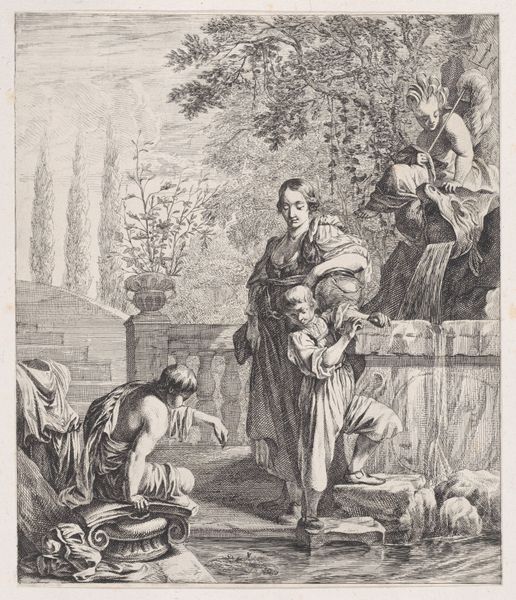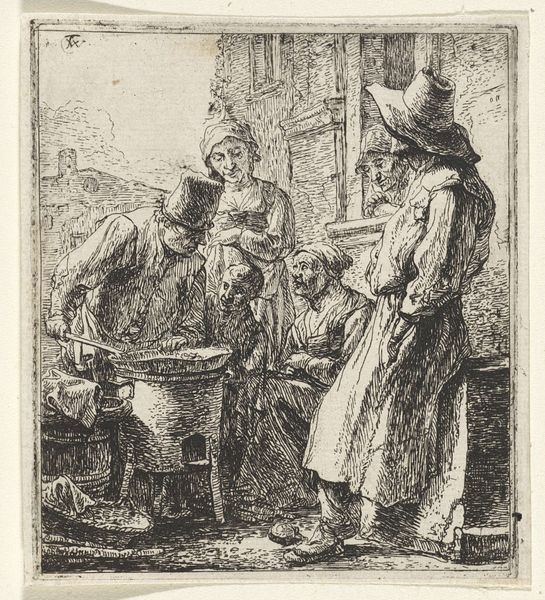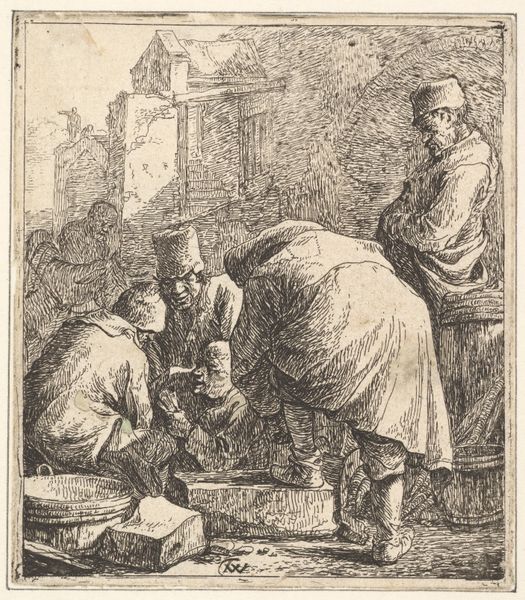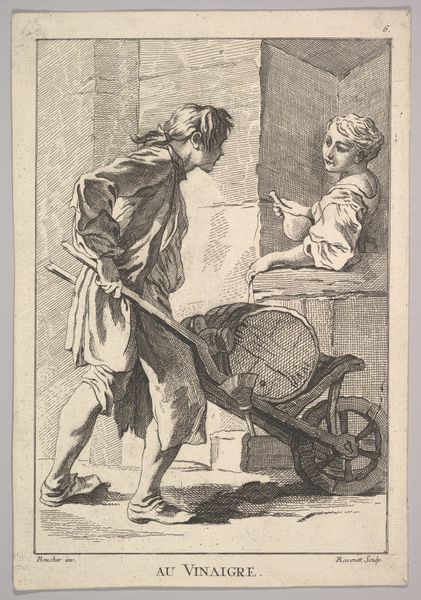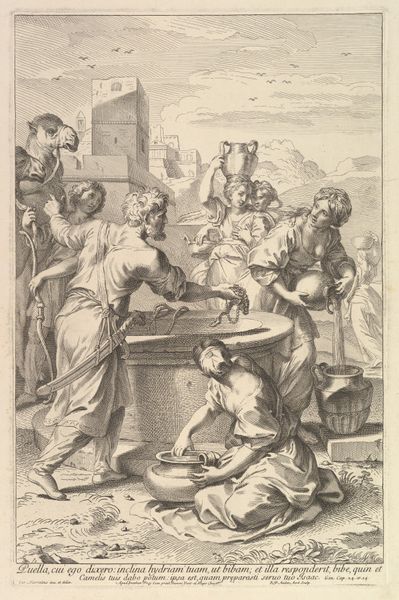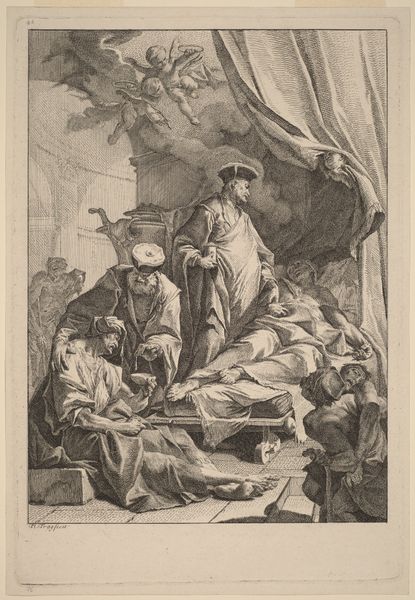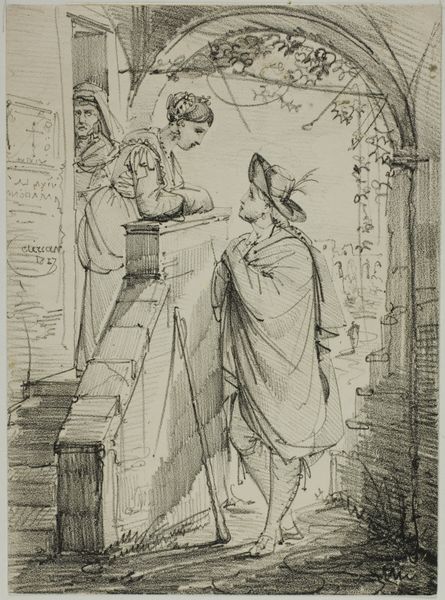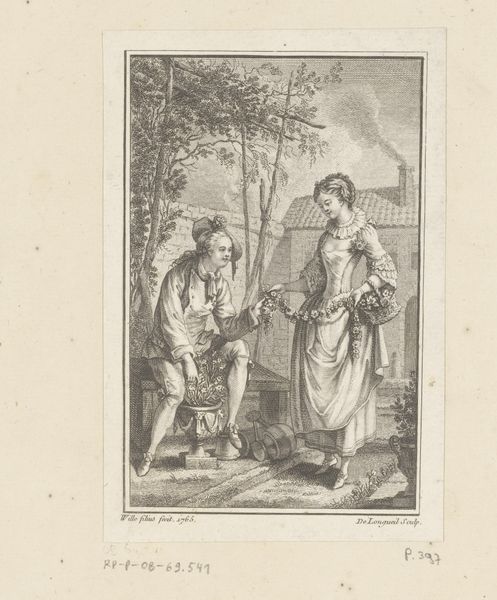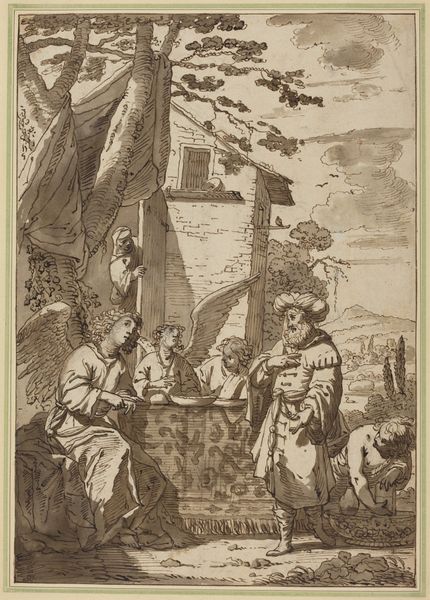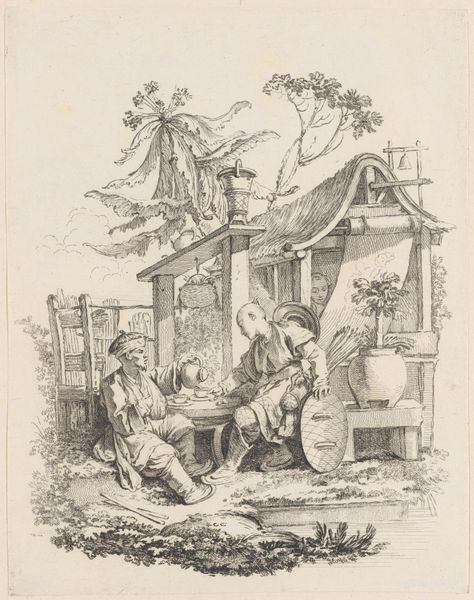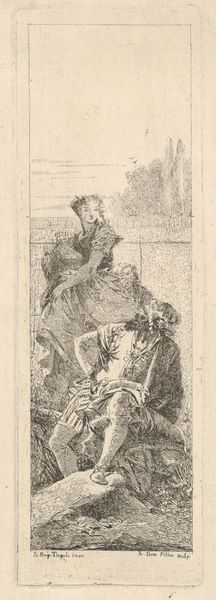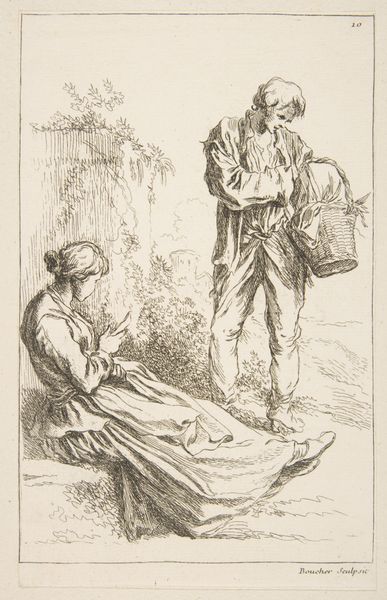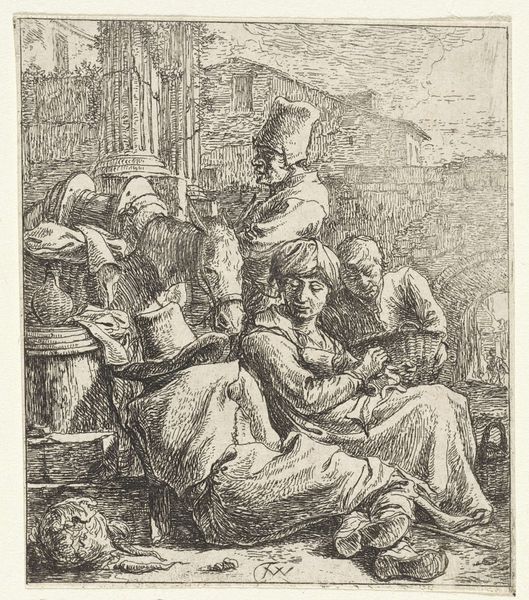
print, engraving
#
neoclacissism
#
allegory
# print
#
classical-realism
#
figuration
#
classicism
#
line
#
history-painting
#
engraving
Dimensions: plate: 29.8 × 21.2 cm (11 3/4 × 8 3/8 in.) sheet: 35.6 × 27.6 cm (14 × 10 7/8 in.)
Copyright: National Gallery of Art: CC0 1.0
Curator: Here we have Giovanni David's "Exegi Monumentum (Art Inscribing Minerva's Shield)" from 1775, a detailed engraving showcasing classical allegorical themes. Editor: My first thought is the intricacy. Look at the density of lines! You can almost feel the weight of the materials involved in its creation and how that relates to mass print production. Curator: The image teems with references to antiquity and knowledge. Note Minerva, goddess of wisdom and strategic warfare. The act of inscribing the shield could be seen as making something immortal through knowledge. Editor: Interesting to think about labor represented. We see Minerva being memorialized but there is a cost; the work to memorialize consumes labor, time, resources, and the labor of engraving which creates these images in a mechanical, repeatable, form. Curator: True, but there's a symbolic continuity, wouldn’t you say? Classical motifs being actively inscribed, renewing the source each time a print is made. The act carries forward not just artistic styles, but an entire tradition of learning and governance. Editor: A tradition maintained by…who? Whose labor keeps those classical ideals burnished? Was David perhaps reflecting on that economic and societal structure that underpinned the creation of the piece, both the world in the art and the actual world? The material reality that supports artistic expression and classical idealism. Curator: Certainly worth considering. David invites the viewer to reflect on more than just the aesthetic. It speaks to the endurance of cultural memory. It encourages the transmission and reinforcement of knowledge, potentially through multiple generations, facilitated by printed iterations of that imagery. Editor: For me, David's piece highlights that art doesn’t spring from nothing, that it's made and then, consumed. How Neoclassicism depends, maybe even thrives on a particular structure of creation and reception. Curator: Food for thought. A fascinating tension to end on! Editor: Precisely.
Comments
No comments
Be the first to comment and join the conversation on the ultimate creative platform.
